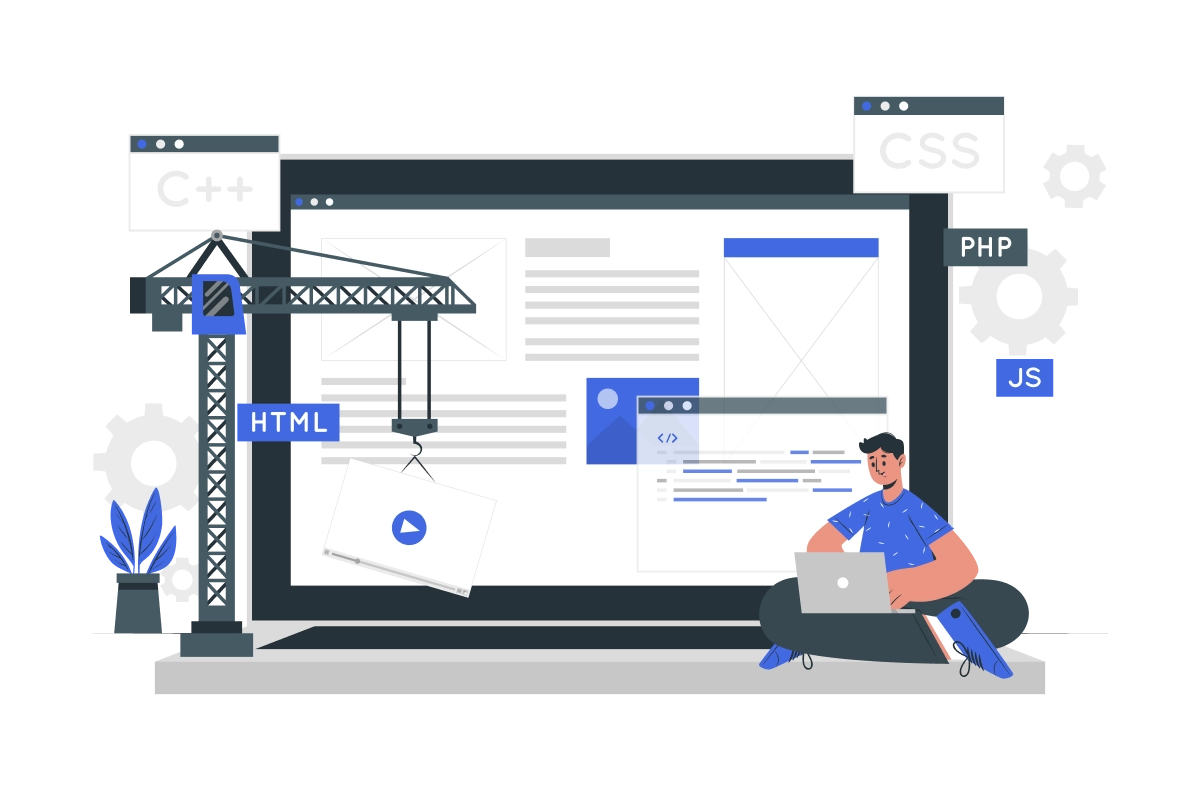
In today’s digital world, having a well-organized and search engine-friendly website is crucial for any business. A website’s structure and its crawlability play a significant role in how search engines, like Google, discover and rank your site’s pages. This blog will discuss the importance of website structure and crawlability, and how they impact your SEO strategy.
What is Website Structure?
Website structure refers to the way your website’s pages and content are organized. It is how information is arranged and connected, making it easier for both visitors and search engines to navigate. A good website structure ensures that users can easily find what they are looking for, and that search engines can index the content effectively.
Website structure can be compared to the architecture of a building. Just as a building with a clear layout makes it easy to find rooms and pathways, a website with a well-organized structure helps both users and search engines move through the content efficiently.
Why Website Structure Matters?
User Experience: A clear and simple website structure makes it easier for visitors to find what they need, which improves user experience. If users can quickly navigate your website, they are more likely to stay longer and engage with your content.
-
SEO Benefits: Search engines crawl websites to index and rank content. If your website is well-structured, search engines can easily access and understand your pages. This can lead to better rankings on search engine results pages (SERPs).
-
Efficient Content Discovery: A good structure helps both users and search engines discover content quickly. If your important pages are easily accessible, they are more likely to be crawled and indexed.
What is Crawlability?
Crawlability refers to the ability of search engines to access and read your website's pages. When search engine bots (or crawlers) visit your site, they follow links to discover new pages. If your website is designed in a way that makes it difficult for bots to navigate, they might miss important content, and your rankings could suffer.
Factors That Affect Crawlability
Site Navigation: If your website has a complex navigation system or broken links, it can block search engine bots from crawling your pages effectively. Simple and clear navigation ensures that search engines can easily follow links to all of your pages.
-
Internal Linking: Internal links connect different pages within your website. A good internal linking structure ensures that important pages are linked from other parts of your website. This improves crawlability by making sure that crawlers can find every page on your site.
-
Sitemaps: A sitemap is a file that lists all the pages on your website. Submitting a sitemap to search engines helps them understand the structure of your website and crawl it more efficiently.
-
Robots.txt: This file tells search engines which pages they are allowed or disallowed from crawling. If the robots.txt file is not configured correctly, it can block important pages from being crawled.
-
Page Speed: Slow-loading pages can affect crawlability. Search engine bots may not spend as much time crawling your site if pages are slow to load, and this can impact your rankings.
Why is Website Structure and Crawlability Important for SEO?
For a website to rank well on search engines, it must be easy for search engine bots to crawl and index. If your website has a solid structure and good crawlability, the search engine will easily find, understand, and rank your content. A well-organized structure ensures that important pages are discovered and indexed, while crawlability ensures that these pages are accessible.
Tips for Improving Website Structure and Crawlability
Create a Logical Hierarchy: Organize your website into categories and subcategories that make sense. Use headings and subheadings to create a clear hierarchy of content.
-
Optimize Internal Linking: Link relevant pages together within your site. This helps search engines and users find important content more easily.
-
Use a Sitemap: Make sure your website has an XML sitemap and submit it to search engines. This will help crawlers understand the structure of your website.
-
Improve Page Load Speed: Optimize images and reduce unnecessary scripts to make sure your pages load quickly. Faster websites are crawled more efficiently.
-
Check Robots.txt Settings: Ensure that your robots.txt file is correctly configured to allow search engines to crawl the important pages of your site.
-
Fix Broken Links: Regularly check your website for broken links and fix them. Broken links can prevent crawlers from accessing important pages.
Conclusion
Website structure and crawlability are two critical factors in the world of SEO. A well-organized website with a strong internal linking system and good crawlability ensures that search engines can discover and index your content, ultimately leading to higher rankings. By reviewing and improving your website’s structure, you can make it easier for both users and search engines to navigate, helping your business gain visibility in a competitive online landscape.
If you want to ensure that your website is optimized for both users and search engines, a comprehensive website structure and crawlability review is an essential step in your SEO strategy.

Author - Sulay Sumaria
I'm Sulay Sumaria, a full-stack engineer and project manager with expertise in JavaScript, cloud platforms, and automation. I'm AWS Certified and experienced in building scalable solutions and leading cross-functional teams.
Recent Articles
- How to Monitor and Control AWS Data Transfer Costs
- Smart Storage Optimization Strategies on AWS
- Maximizing Efficiency with AWS Auto Scaling Optimization
- Understanding AWS Reserved Instances and Savings Plans: Smarter Cost Management for Long-Term Use
- Optimizing Cloud Efficiency Through Instance Right-Sizing
Ready to Transform Your Business?
Let's discuss how we can help you achieve similar results.
Get In Touch